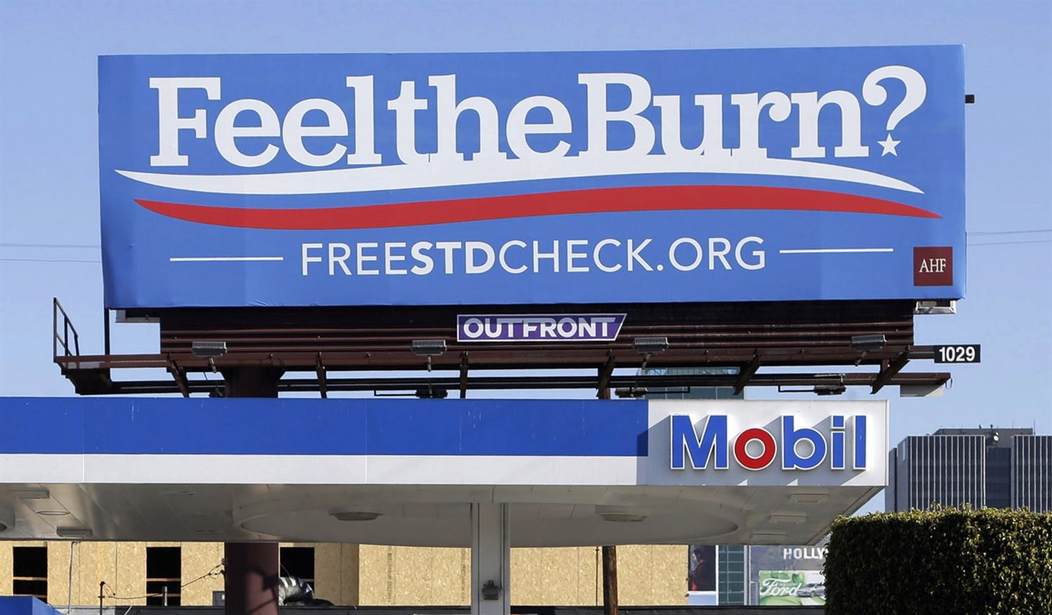Even though President Biden has declared the COVID pandemic to be over, that doesn’t mean that we’ve whipped all of our health issues into submission. Officials at the CDC are now warning of a sharp increase in diseases of another sort. They are reporting double-digit increases in sexually transmitted diseases and we’re not just talking about the new invasion of monkeypox. (Which has thus far managed to kill a grand total of one person in the United States.) Both syphilis and gonorrhea are making a comeback. Reported infections of both have actually been rising for the better part of a decade, but the surge in the past two years has been particularly alarming. So what’s causing this? According to the experts… it’s complicated. (Associated Press)
Sharply rising cases of some sexually transmitted diseases — including a 26% rise in new syphilis infections reported last year — are prompting U.S. health officials to call for new prevention and treatment efforts.
“It is imperative that we … work to rebuild, innovate, and expand (STD) prevention in the U.S.,” said Dr. Leandro Mena of the U.S. Centers for Disease Control and Prevention in a speech Monday at a medical conference on sexually transmitted diseases.
Infections rates for some STDs, including gonorrhea and syphilis, have been rising for years. Last year the rate of syphilis cases reached its highest since 1991 and the total number of cases hit its highest since 1948. HIV cases are also on the rise, up 16% last year.
The executive director of the National Coalition of STD Directors (in case you didn’t know that was a thing) has described the situation as being “out of control.” In 1998, the number of new syphilis cases in the United States fell to barely 7,000 and the CDC was optimistically talking about wiping it out entirely. But then things turned around in the other direction and case numbers have continued to increase.
One of the remarkable things about the linked report is the way that the AP (and presumably the CDC) call out a specific community for being a primary driver of these increases. They first note that monkeypox (or whatever we’re supposed to call it this week) “is being spread mainly between men who have sex with other men.” They later note that the rise in syphilis cases starting in 2002 was seen “largely among gay and bisexual men,” going on to say that the highest rates are currently seen “among Black and Hispanic Americans and Native Americans.” Even assuming that’s true, it was previously considered “homophobic” or “racist” to point such things out.
While it seems clear that there really are more cases of STDs showing up, how much of the most recent increase was driven by both government policies and simple math as opposed to social behavior shifts? In 2020 and the first half of 2021, much of the country was locked down. In fear of COVID, fewer people were going out and mixing with others and almost all of the bars were closed. It just makes sense that there were fewer people having sex outside of committed relationships than in previous years, so you would expect transmission rates to drop, right? But now that the country is open for business again, people are back out on the dating scene, so a spike was probably predictable.
Also, the numbers the CDC highlight are “total cases” for the most part. The country’s population is still increasing, albeit far more slowly than it used to thanks to lower fertility rates and more people putting off or avoiding having children. If there are more people in general there are probably more people having sex. That’s the “basic math” part of the equation I mentioned above.
You might think that we’d have beaten this problem long before now. It’s not as if we don’t understand how STDs are spread. (It’s right in the name, for Pete’s sake.) And condoms are widely available with far less stigma attached to their purchase than was seen in the “Happy Days” era. And yet STDs remain a problem that simply won’t go away. I understand people don’t like to hear this said aloud, but maybe a big driver is the fact that most guys really don’t like condoms. If you want to wipe out STDs, perhaps the next huge medical breakthrough should be something that replaces them entirely and is still effective in preventing the spread of diseases.








Join the conversation as a VIP Member